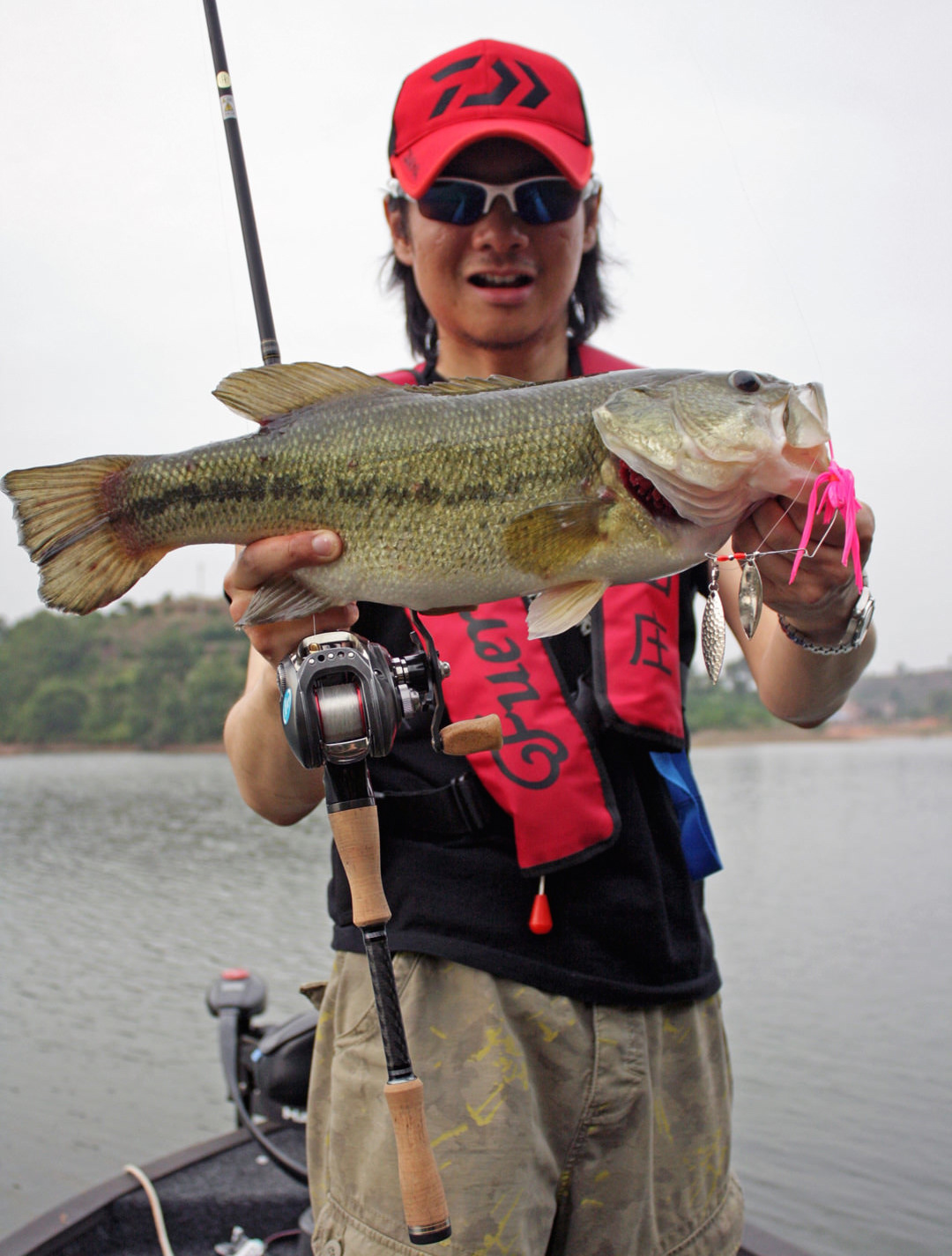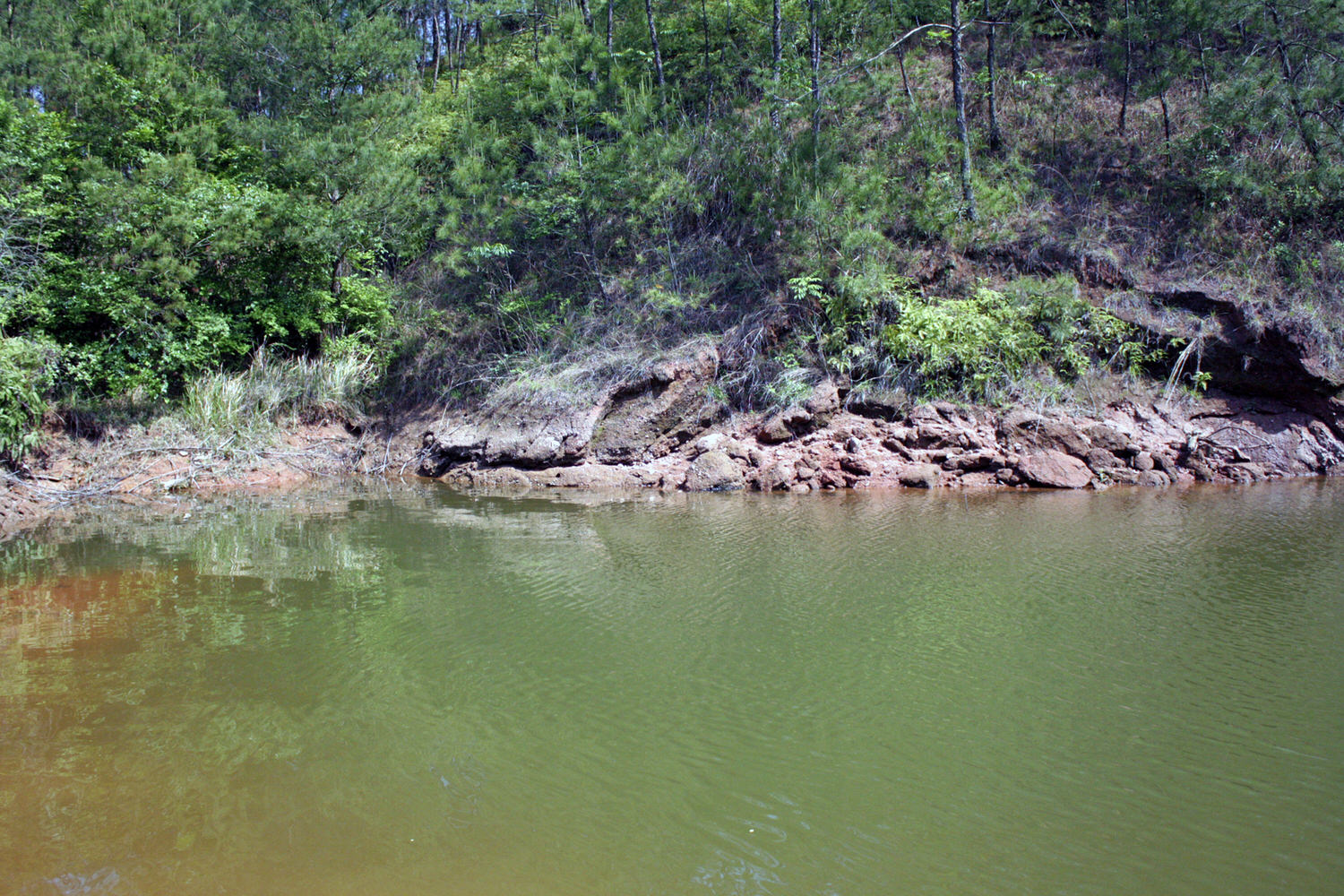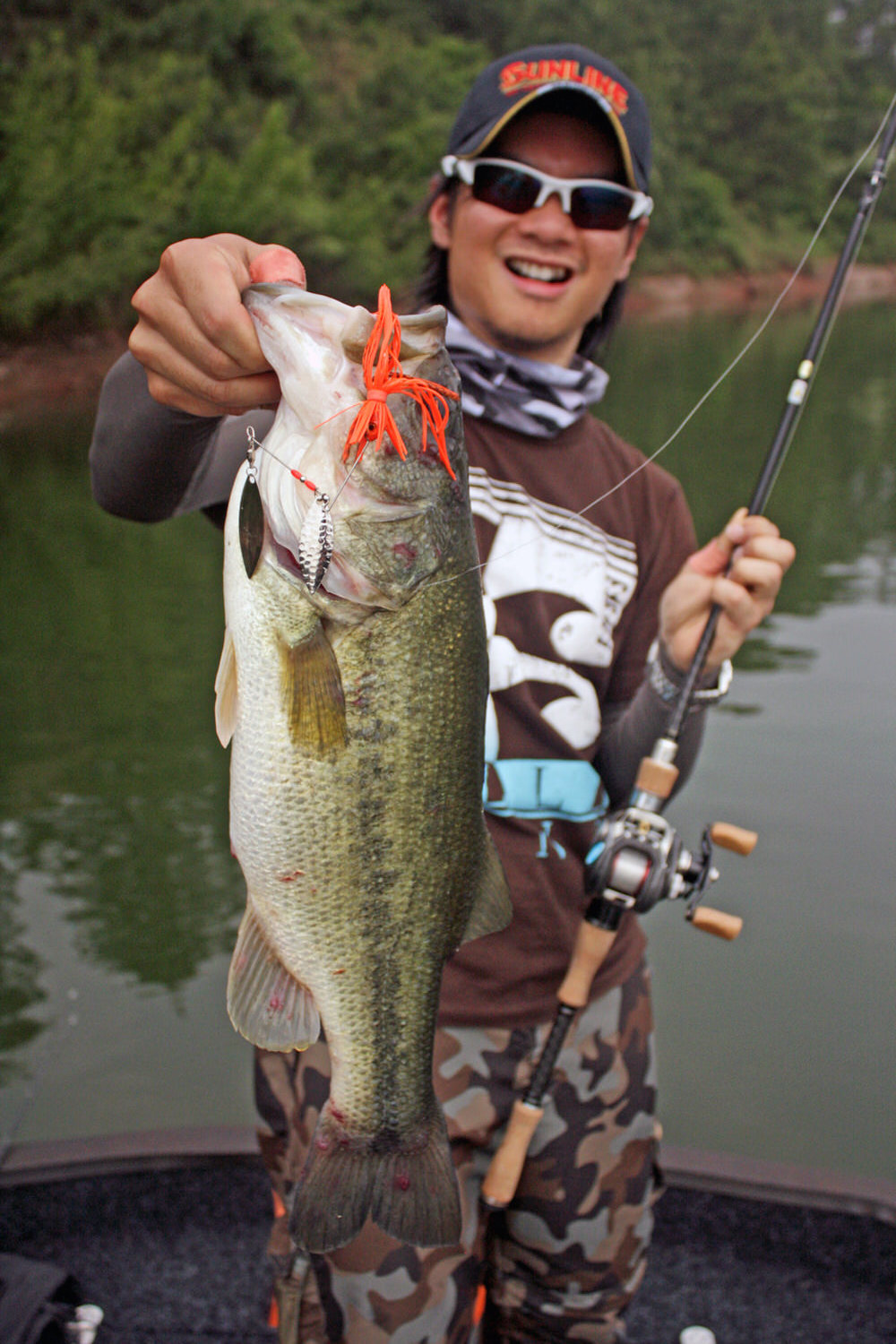Power Fishing ‘Light Spinnerbaits’
Zhaibei Reservoir (South-eastern China)
Bass fishing in China
China? Yes, you read that right. Bass fishing has gone global and China is the sport’s latest addition. But, before we take a closer look at that in future instalments, allow me to share with you some of the top postspawn patterns in one of the country’s current hottest lakes, Zhaibei Reservoir in rural Jiangxi Province in the South-eastern region. In this instalment, let’s talk about the effectiveness of ‘light spinnerbaits’ on suspended postspawn bass.
Pic. 1. Zhaibei Reservoir in Jiangxi Province is one of the many bass lakes in China today. On the water, there are hundreds of yards of bluff shorelines to explore.
Postspawn spinnerbait pattern
During my weeklong stint in China springtime last year, I relied on ¼ oz lights spinnerbaits as my ‘ace lure’ in what is normally considered early postspawn period in subtropical South-eastern China. Though the postspawn fishing was quite tough in some ways, quality bass could still be caught on light spinnerbaits, but only during certain periods of the day.
Pic. 2. ‘Sight fished’ 4lb postspawn bass on ‘bubblegum pink’ ¼ oz light spinnerbait.
The situation was somewhat reversed soon after I noticed that wind had a major role to play in these brief but aggressive feeding windows. In slick conditions however, bites can be hard to come by. Basically, when the wind blows, it breaks up the light refracting surface tension of water, its effects disorients baitfish, and in turn positions bass that are in a mood to grab a meal. In other words, that is usually the perfect scenario for one to go in search of big bites on Zhaibei reservoir because when the wind blows, the lake will simply go on fire.
What makes Zhaibei Reservoir unique, in my opinion, has all to do with its secondary features and forage. And in terms of forage, especially in spring when ‘supply’ is ample, you will find bait fish spawning in shallow water and they are usually not too far away from where the bass would usually spawn. If you follow the baitfish trail, you will most likely find bass. From how I see it, tandem willow light spinnerbaits worked near the shoreline closely resembles pods of baitfish, either cruising along or foraging amongst the shoreline cover.
Pic. 3. A transitional area in a small pocket with deep water to the right and shallow water to the left.
Spinnerbaiting in wind
When I am fishing with spinnerbaits in windy conditions, I target areas where the wind is blowing into the bank. On Zhaibei Reservoir, as with other bodies of water, I look for features that standout, especially secondary points and laydowns. In early spring, where bass have yet to form schools, the ones that I caught could have been isolated fish.
Pic. 4. At times, bass in Zhaibei Reservoir crave ‘bright orange’ spinnerbaits.
Conditions found at Zhaibei Reservoir in spring would make power fishing tactics all more relevant than other seasons. For me as an angler, the idea to that has always been simple, keep the trolling moving until you find bites, especially if the wind is blowing. If the water is clear, I will stay clear of any fishy looking spots. In fact, I caught most of my fish on long casts, on targets 30’ to 40’ away from the bow, some on sight fishing.
Pic. 5. … and there are times when they just prefer plain old black skirted ones.
From my previous stint in Eastern China the year before, of which happens to coincide with the postspawn period, I found that bass up north in the country prefer fast moving light spinnerbaits. In the South-east however, they prefer spinnerbaits just a tad slower and worked deeper down the water column of 3’ to 4’ deep.
Of the many variations of light spinnerbaits that I have fished in Zhaibei Reservoir, ¼ oz tandem willow bladed ones tied on 10 to 12lb test Sunline fluorocarbon line yielded really good results. At one instance, I was averaging 3lbs in weight on a ‘bubblegum pink’ and ‘bright orange’ skirted tandem willow spinnerbait. Though this may not sound like much, 3lb’ers are considered good size in China where tournaments on most lakes are often worn on bags weighing less than 10lbs (period).
Evolution of spinnerbaits
So, we have talked about the pattern, and now let’s talk about the bait.
The once considered simple spinnerbaits are changing in a big way. The current market trend that we are seeing now has had a huge difference in how we use spinnerbaits today. In some ways, spinnerbaits are following the path of the change concerning lures such as crankbaits, where they are becoming more 'specialized' for certain bass fishing situations.
Pic. 6. A good size postspawn male that could not resist the ‘bright orange’ temptation.
Lately, the trend is about custom made spinnerbaits. Gone are the days where you buy a ¼ oz tandem willow bladed spinnerbait in black and white skirts off the shelf at your local tackle shop. These days, anglers want baits that are customized for their specific waters. No longer will you have to purchase those big, heavy baits that only come fitted with bulky blades. Nowadays, if you want a bait that will get down deep, but still have blades small enough that they do not ‘lift’ the bait up shallow, you can custom order it with any combination you want.
Another trend is the move towards smaller profiles. I am not exactly sure why that is, but it also seems to be the trend with crankbaits too. On the market lately, spinnerbait bodies and the skirts that go with them are getting smaller by the profile. It may be that smaller profile spinnerbaits are a response to fishing pressure or it could be just a marketing move by some manufacturers. I use ¼ oz spinnerbaits build with medium wire, with shorter arms, smaller head shape, 3/0 Mustad Ultrapoint hooks, smaller blades and trimmed skirts which makes the bait compact and yet balanced when worked at moderate cadence.
These days, I do not normally buy my spinnerbaits off the shelves at tackle shops. Instead, I have them custom made by a lure maker in Texas. After many years fishing overseas, I have scaled down on the variety of spinnerbaits to suit my style of fishing. From experience on waters that I have fished in the past, these days I rarely fish with spinnerbaits ½ oz and more only for the main reason that I have yet to find conditions which calls for heavier spinnerbaits.
Pic. 7. Beaten but not down. This light spinnerbait with medium duty wire was bent back to shape and lived on to catch more fish in Zhaibei Reservoir.
Acknowledgements
I would like to thank Bill Siemantel at theBBZ for giving me this opportunity to present to you this short feature on postspawn bass fishing in China.
About the author
Bertrand Ngim, Ph.D., is freelance writer and international columnist for SA Bass (South Africa) and Rod&Line (Malaysia), Lurevision (Shanghai, China) and mechanical engineer by profession. He is also a field-staff for Sunline and Majorcraft (UK and Ireland) and TCE Sports Daiwa (South East Asia). He has published more than 60 feature length articles in angling magazines in countries such as South Africa, Malaysia, England, France and China.







